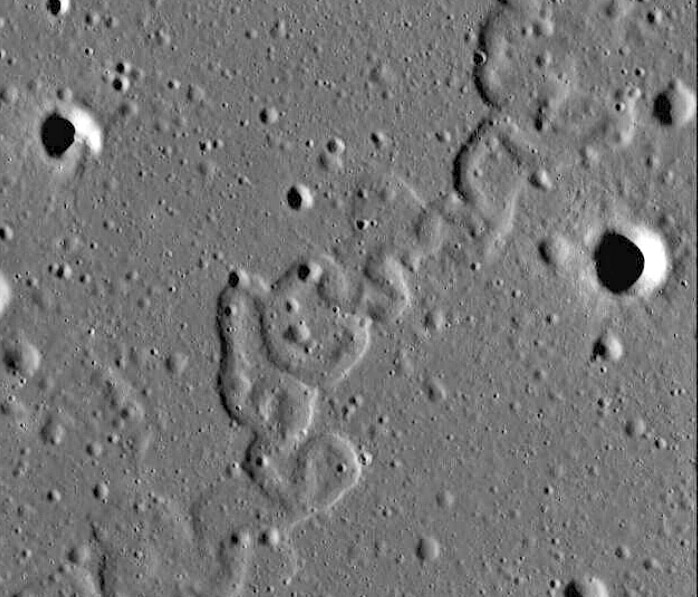Difference between revisions of "October 8, 2009"
(Created page with "__NOTOC__ =The Enemy of Understanding= <!-- ws:start:WikiTextHeadingRule:0:<h1> --> <!-- ws:start:WikiTextLocalImageRule:6:<img src="/file/view/LPOD-Oct8-09....") |
|||
| Line 4: | Line 4: | ||
<!-- ws:start:WikiTextHeadingRule:0:<h1> --> | <!-- ws:start:WikiTextHeadingRule:0:<h1> --> | ||
<!-- ws:start:WikiTextLocalImageRule:6:<img src="/file/view/LPOD-Oct8-09.jpg/93778992/LPOD-Oct8-09.jpg" alt="" title="" /> -->[[File:LPOD-Oct8-09.jpg|LPOD-Oct8-09.jpg]]<!-- ws:end:WikiTextLocalImageRule:6 --><br /> | <!-- ws:start:WikiTextLocalImageRule:6:<img src="/file/view/LPOD-Oct8-09.jpg/93778992/LPOD-Oct8-09.jpg" alt="" title="" /> -->[[File:LPOD-Oct8-09.jpg|LPOD-Oct8-09.jpg]]<!-- ws:end:WikiTextLocalImageRule:6 --><br /> | ||
| − | <em>LRO NAC image from [mailto:tychocrater@yahoo.com Chuck Wood]</em><br /> | + | <em>LRO NAC image from [http://wms.lroc.asu.edu/lroc_browse/view/M102672335L LROC Browse Gallery], NASA/ASU</em><br /> |
| + | <br /> | ||
| + | I am beginning to think that a few meters resolution is beyond what is useful for many geologic studies of the Moon. This recent LRO image of a highly sinuous rille on the mare-covered floor of Ulugh Beigh A crater does not really provide more understanding of the rille-forming process than we would get from resolution of tens of meters. The problem is that since this rille formed about 3.5 billion years ago, development of the regolith has muted or destroyed all the evidence that was originally displayed in the walls and levees of the rille. Even enlarging to the maximum resolution of 1.5 m does not reveal a surface much different than the smoothly rolling regolith-dominated terrain seen here. Regolith is the enemy of understanding. Hyper resolution is invaluable for spotting human artifacts and counting impact craters to date a surface, but for some studies LRO's wide angle camera images may be more valuable than the Narrow angle camera views. I hope the LRO team will release more of the WAC images!<br /> | ||
| + | <br /> | ||
| + | <em>[mailto:tychocrater@yahoo.com Chuck Wood]</em><br /> | ||
Note: Observers early Friday morning have the chance to witness the impact of LCROSS into Cabeus. Please send LPOD your reports of successful observations or not of any impact effects for a special edition of LPOD. Clear skies and good luck!<br /> | Note: Observers early Friday morning have the chance to witness the impact of LCROSS into Cabeus. Please send LPOD your reports of successful observations or not of any impact effects for a special edition of LPOD. Clear skies and good luck!<br /> | ||
<br /> | <br /> | ||
Revision as of 20:46, 1 January 2015
The Enemy of Understanding
LRO NAC image from LROC Browse Gallery, NASA/ASU
I am beginning to think that a few meters resolution is beyond what is useful for many geologic studies of the Moon. This recent LRO image of a highly sinuous rille on the mare-covered floor of Ulugh Beigh A crater does not really provide more understanding of the rille-forming process than we would get from resolution of tens of meters. The problem is that since this rille formed about 3.5 billion years ago, development of the regolith has muted or destroyed all the evidence that was originally displayed in the walls and levees of the rille. Even enlarging to the maximum resolution of 1.5 m does not reveal a surface much different than the smoothly rolling regolith-dominated terrain seen here. Regolith is the enemy of understanding. Hyper resolution is invaluable for spotting human artifacts and counting impact craters to date a surface, but for some studies LRO's wide angle camera images may be more valuable than the Narrow angle camera views. I hope the LRO team will release more of the WAC images!
Chuck Wood
Note: Observers early Friday morning have the chance to witness the impact of LCROSS into Cabeus. Please send LPOD your reports of successful observations or not of any impact effects for a special edition of LPOD. Clear skies and good luck!
Technical Details
Jul 19, 2009; 19:51:35 UTC
Related Links
Rükl plate 8
A Lunar Orbiter IV perspective
COMMENTS?
Click on this icon File:PostIcon.jpg at the upper right to post a comment.




